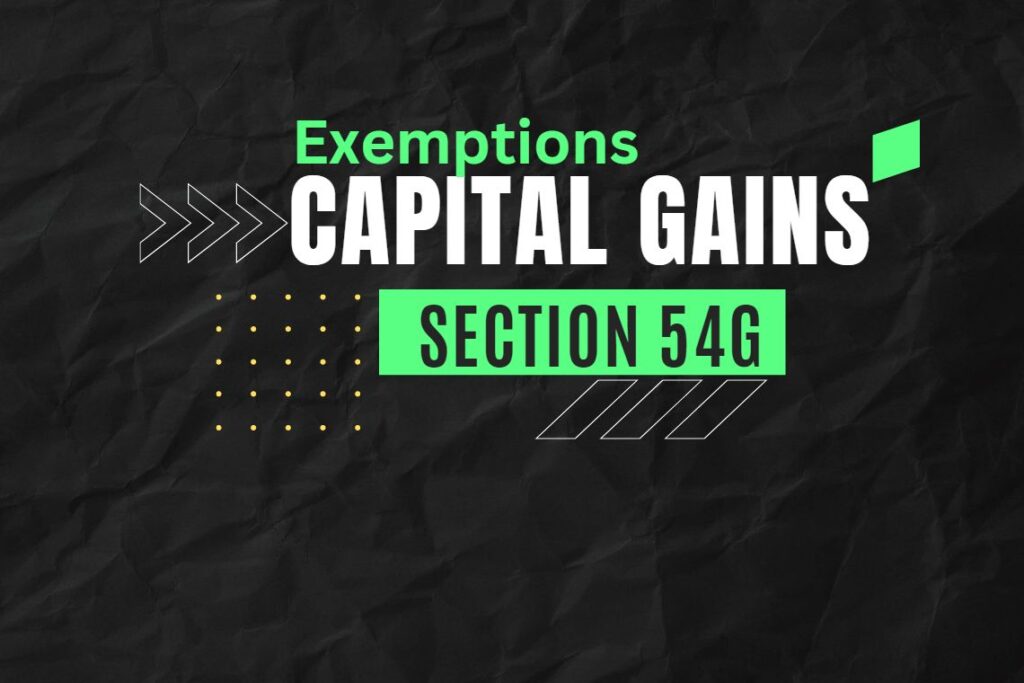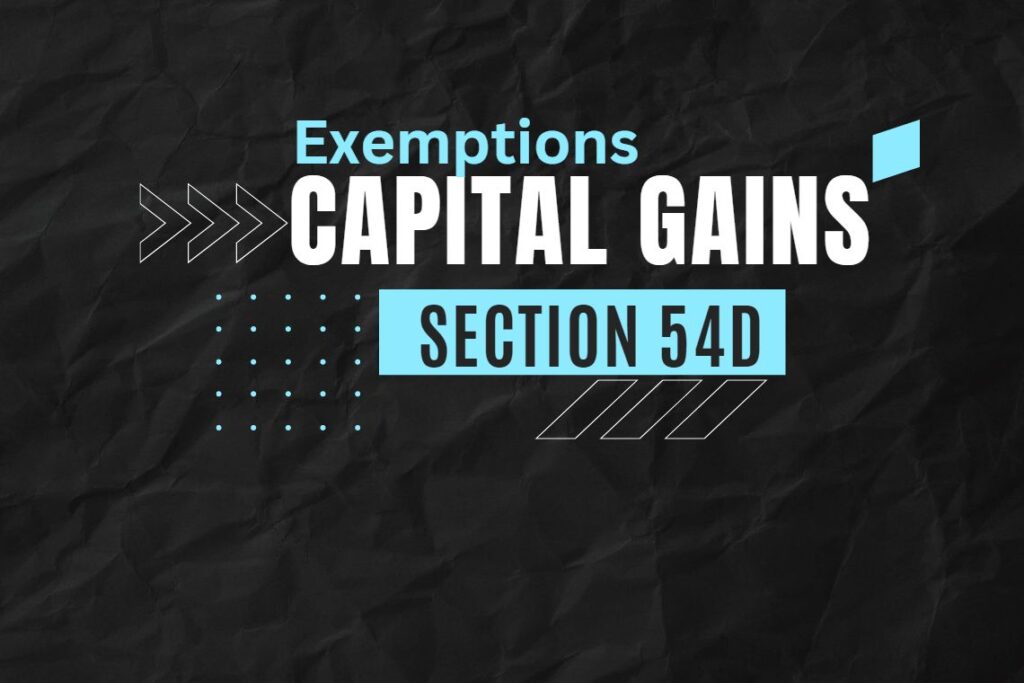Long-term capital gain arising on the transfer of any capital asset being land or building or both is exempt under Section 54EC in the following circumstances:
(i) The asset (i.e., land or building or both) transferred is a long-term capital and hence, there is a long-term capital gain.
(ii) The asset is transferred by any assessee.
(iii) The assessee has within a period of 6 months after the date of such transfer invested the capital gain in the long-term specified assets.
(iv) The cost of long-term specified assets which is considered for the purpose of exemption under this section i.e., 54EC, shall not be eligible for deduction with reference to such cost u/s 80C.
Quantum of deduction
(i) If the amount of capital gain is equal to or less than the cost of the long-term specified assets acquired within 6 months of the date of transfer, the entire capital gain shall be exempt.
(ii) If the amount of capital gain is greater than the cost of the long-term specified assets, than the cost of the long-term specified assets shall be allowed as exemption.
In other words, capital gain shall be exempt to the extent it is invested in the long-term specified assets within a period of 6 months from the date of such transfer.
Investment in Bonds limited to Rs.50,00,000 (Rs. 50 Lakh):
The investment made in the long-term specified asset by an assessee out of capital gains arising from transfer of one or more original asset during any financial year in which the original asset or assets are transferred and in the subsequent financial year cannot exceed Rs. 50 Lakh.
Consequences if the Long-Term Specified Asset is Transferred or Converted into Money within 5 Years:
Where the long-term specified asset is transferred or converted (otherwise than by transfer) into money at any time within a period of 5 years from the date of its acquisition, the amount of capital gain exempt u/s 54EC earlier, shall be deemed to be long-term capital gain of the previous year, in which the long-term specified asset is transferred or converted (otherwise than by transfer) into money.
Key Points of Section 54EC
Under Section 54EC of the Income Tax Act in India, individuals and Hindu Undivided Families (HUFs) can claim an exemption from capital gains tax if they invest the proceeds from the sale of a long-term capital asset (such as land or building) into certain specified bonds.
Here are the key points related to this provision:
1. Eligibility:
To be eligible for the exemption under Section 54EC, the capital asset being transferred must be a long-term capital asset, which generally means that it should be held for at least two years (24 months) before the sale.
2. Investment in Specified Bonds:
The exemption is available if the taxpayer invests the capital gains from the sale of the asset into specific bonds known as “Long-term specified assets” or “Section 54EC bonds.” These bonds are typically issued by government-owned entities like the National Highways Authority of India (NHAI) and the Rural Electrification Corporation Limited (RECL).
3. Investment Amount Limit:
As of my last knowledge update in September 2021, there is a limit on the amount that can be invested in these bonds to claim the exemption. The maximum limit was Rs. 50 lakhs per financial year per taxpayer. This limit may change, so it’s essential to check the current limit when making the investment.
4. Lock-in Period:
The investments in these bonds come with a lock-in period of five years. This means that you cannot sell or transfer the bonds for five years from the date of purchase.
5. Exemption Amount:
The capital gains tax exemption under Section 54EC is limited to the amount invested in the specified bonds or the amount of capital gains, whichever is lower. This means that if you invest an amount less than the capital gains in the bonds, the exemption will be restricted to the actual amount invested.
6. Time Limit for Investment:
To claim the exemption, you must invest in these specified bonds within six months from the date of the sale of the long-term asset.
7. Tax Implications:
If you don’t invest the capital gains in the specified bonds within the specified time frame or withdraw the investment before the completion of the lock-in period, the capital gains tax exemption will be revoked, and you will be liable to pay capital gains tax.
Summary & Understanding Section 54EC:
When it comes to selling a long-term capital asset like land or building, one of the major concerns for the seller is the capital gains tax that they may have to pay. However, under Section 54EC of the Income Tax Act, there is a provision for exemption of capital gains tax if the proceeds are invested in certain bonds.
Section 54EC allows individuals and Hindu Undivided Families (HUFs) to claim exemption from capital gains tax if the long-term capital asset being transferred is land or building or both, and the proceeds are invested in specified bonds within a specified time frame.
The specified bonds referred to in Section 54EC are issued by the National Highways Authority of India (NHAI) and the Rural Electrification Corporation (REC). These bonds have a lock-in period of three years and provide a fixed rate of interest. By investing in these bonds, the taxpayer can defer the payment of capital gains tax and also earn a steady income.
It is important to note that the investment in these bonds should be made within six months from the date of transfer of the capital asset. The maximum amount that can be invested in these bonds to claim the exemption is Rs. 50 lakhs in a financial year. If the amount of capital gains is less than the investment made in the specified bonds, only the actual amount of capital gains will be exempted from tax.
However, if the taxpayer chooses to sell or transfer these bonds before the completion of the lock-in period of three years, the capital gains tax exemption claimed earlier will be revoked. The amount of capital gains exempted earlier will be added to the income of the taxpayer in the year of transfer of the bonds.
It is also important to keep in mind that the exemption under Section 54EC can only be claimed if the capital asset being transferred is a long-term capital asset. This means that the asset should have been held by the taxpayer for a period of more than two years (for land or building) to be eligible for the exemption. If the asset is held for a period of two years or less, it will be considered a short-term capital asset and the exemption under Section 54EC cannot be claimed.
In conclusion, Section 54EC of the Income Tax Act provides a valuable opportunity for individuals and HUFs to save on capital gains tax by investing in specified bonds. By understanding the provisions of this section and fulfilling the necessary requirements, taxpayers can effectively plan their investments and minimize their tax liability.











